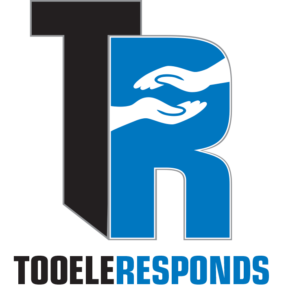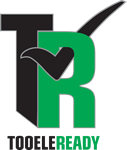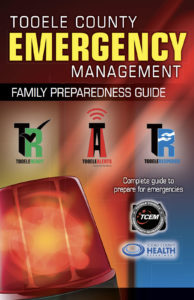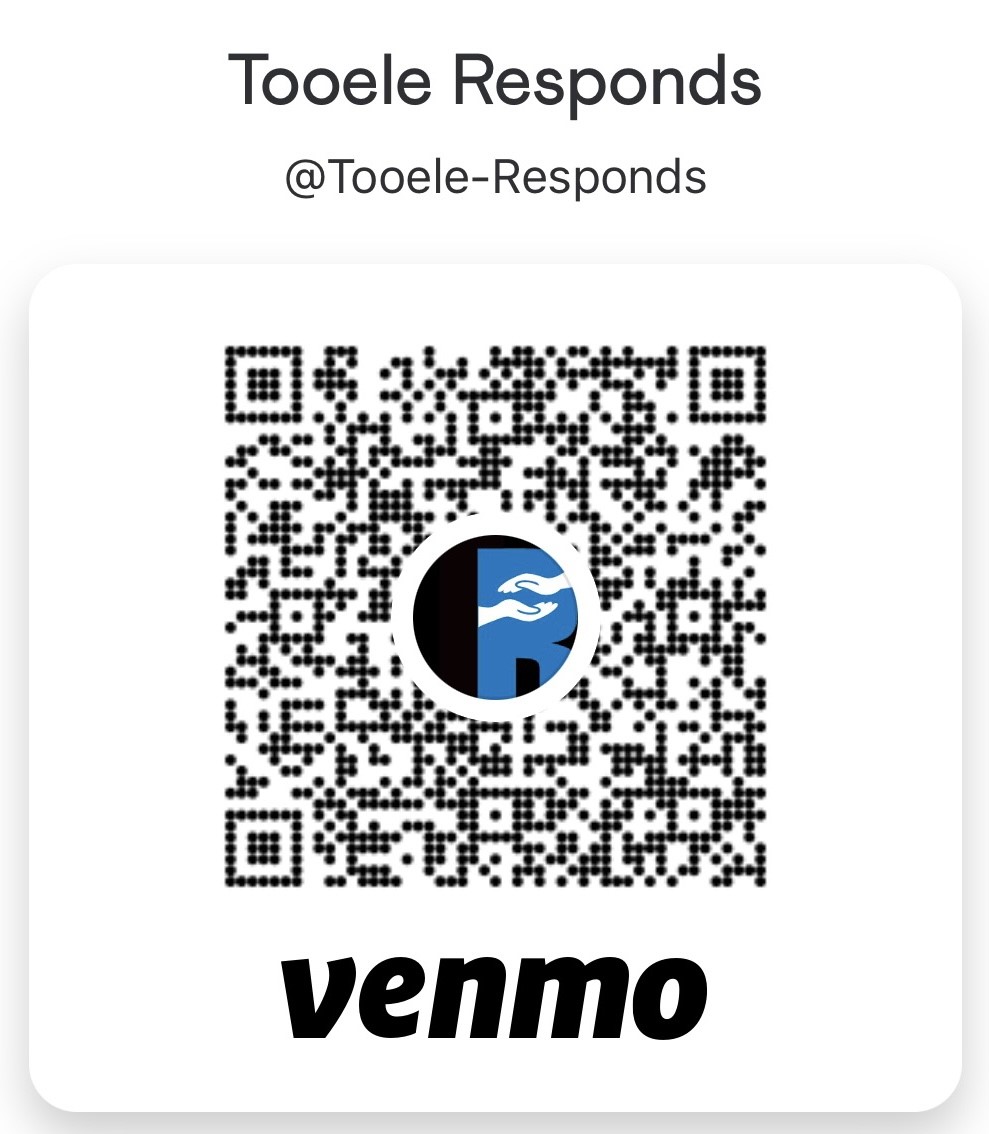Get Involved
The most important way to be involved is to exercise and practice your family plan, keep your supplies updated and make sure everyone knows what they need to do before, during, and after a disaster. The most important people to be involved with is your family and your neighborhood.
 The most important way to be involved is to exercise and practice your family plan, keep your supplies updated, and make sure everyone knows what they need to do before, during, and after a disaster. The most important people to be involved with is your family and your neighborhood. There are many opportunities to learn more about preparedness and training to serve in the community. Training is a great way to learn how to better empower yourself and your family to respond effectively after a disaster. There are a number of opportunities to become trained as citizen responders. Check the Tooele County Emergency
The most important way to be involved is to exercise and practice your family plan, keep your supplies updated, and make sure everyone knows what they need to do before, during, and after a disaster. The most important people to be involved with is your family and your neighborhood. There are many opportunities to learn more about preparedness and training to serve in the community. Training is a great way to learn how to better empower yourself and your family to respond effectively after a disaster. There are a number of opportunities to become trained as citizen responders. Check the Tooele County Emergency
Management website at www.tcem.org or www.readytooele.org for training opportunities and exercises. You can also follow TCEM on Facebook and Twitter to learn about opportunities such as Tooele Responds, CERT (Community Emergency Response Team), American Red Cross Disaster Action Team and Shelter workers, Medical Reserve Corps (MRC), Volunteer Coordination Center (VCC) and others. Trained people are needed and are a valuable resource to the neighborhood and community. Getting involved will help our community recover faster and become more resilient in the process. Make a goal to learn more and become trained.
Recognizing that preparedness is a shared responsibility, it calls for the involvement of everyone—not just the government—in preparedness efforts. By working together, everyone can keep the nation safe from harm and be resilient when struck by hazards, such as natural disasters, acts of terrorism, and pandemics.
 THE WHOLE COMMUNITY INCLUDES:
THE WHOLE COMMUNITY INCLUDES:
- Individuals and families, including those with access and functional needs
- Businesses
- Faith-based and community organizations
- Nonprofit groups
- Schools and academia
- Media outlets
- All levels of government, including state, local, tribal, territorial, and federal partners
The whole community can participate in programs and activities to make their families, homes, and communities safer from risks and threats. Community leaders agree the formula for ensuring a safer homeland consists of volunteers, a trained and informed public and private sector, and increased support of emergency response agencies during disasters. Major disasters can overwhelm fi rst responder agencies, empowering individuals to respond appropriately will lend support.
It is important to understand that to be a spontaneous volunteer or give donations spontaneously hinders the recovery process. It is a good idea to be affi liated with a reputable response group so that you can help with the relief effort correctly. It is also a wise practice to be informed about what the needs actually are. Giving money to reputable organizations ensures that your dollars are being spent appropriately on needs, and is not sitting somewhere in a warehouse waiting to be sorted. Monetary donations don’t need to know a size or a color, it can be used for much more than stuff. It can be used toward real recovery.
The best way to help the whole community and your family is to practice how you would respond to a disaster as a family and as a neighborhood. If plans aren’t practiced, the gaps are never found and recovery will take longer.

Have fun with preparing. Play games. Pretend there are zombies that are coming. Play the “what if…”
game. Teach children skills that will help with your family response. Go Camping. Read novels and information books about preparedness. Try out your kits. Eat the food in your kits. Test them out and see if your family will really eat what is in their kit. Go to a practice shelter event. Take a tour of the Emergency Operations Center. Have a block party to get to know your neighbors and how you can help each other. Find ways to incorporate preparedness into every day life.
PRACTICING AND MAINTAINING YOUR PLAN
- Quiz family members often so they remember what to do.
- Conduct fi re and emergency evacuation drills.
- Practice the earthquake “Drop, Cover, and Hold On” protective action.
- Register and participate in the statewide Shake Out Day in April every year.
- Participate in community exercises and drills.
- Replace stored water every year and stored food every six months.
- Test and recharge your fi re extinguisher(s) per manufacturers’ instructions.
- Test your smoke and carbon monoxide detectors monthly and change the batteries at least once a year.
Your family preparedness is the most important part of the whole community concept because preparedness
begins with individuals and families, and goes out from there. YOU have a great role and responsibility to play when it comes to recovery and resilience, not only for your family, but for your workplace, the community, and the neighborhood which you live in.
TYING IT ALL TOGETHER
After following the preparedness steps: Get Informed, Make a Plan, Make a Kit, and Get Involved, it is important to fi nd out what you can improve upon and evaluate your efforts to make your personal recovery more successful.
Evaluation involves looking at performance to determine how it differs from expectations, and realizing
strengths and opportunities for improvement. Improvement involves a little planning and implementing needed changes to align performance with your goals and objectives of your family preparedness. Objectives should also be part of ongoing elements of your family’s and community’s overall preparedness effort.
Evaluation tells you whether your plans work. A plan may look good on paper, but until it is put into practice, you won’t really know whether your procedures are effective and feasible, and/or when family members and neighbors have been equipped with the capabilities they need to do the job of responding to an emergency. Objective evaluation lets you identify strengths and weakness of plans and actions, and identifi es potential problem areas that may have been overlooked.
THIS IS A GREAT TIME TO ASK YOURSELF QUESTIONS PERTAINING TO YOUR OVERALL
READINESS.
- Can we implement our plan effectively if an actual disaster happened tomorrow?
- What are the lessons we have learned from exercising our plans, playing games, and learning
more about preparedness? - How can we better close the gaps that make us not as prepared as we want to be?
- What actions can we take to make our preparedness and response capabilities more effi cient and effective?
Write down your answers and make an action plan of what you will work on before the next time
you practice your plan
When those questions are put to the test; you will know how you, your family, and neighborhood will fare. Preparedness is an ongoing process that should be continued to help instill a culture of preparedness within families and communities. There are so many resources that can be utilized to help with personal, family, work, worship, and community preparedness. Please take advantage of what is available to strengthen your family and neighborhood. Some resource links can be found at the end of the family preparedness guide and on www.readytooele.org or www.tcem.org.
Improving is the best part of the process because you can see where you have been, the progress you made and the areas that need work to help build better and stronger. When you take into account the lessons learned within the process, and start to share them and help others, a culture of preparedness can support neighborhood and whole community preparedness efforts and assists in the Emergency Management process.
NEIGHBORS HELPING NEIGHBORS
Neighbors Helping Neighbors is a simple way to prepare for emergencies such as an earthquake or other major disaster. It does not require any special expertise or knowledge – just a to help and be more prepared.
We invite you to meet with your neighbors to discuss these steps and follow them together. Making plans as neighbors allows help to be available immediately when the Professional First Responders are unable to come because EVERYONE needs help and they are taking care of other larger issues. Help will most likely come from neighbors who will need to rely on each other and rely on resources within the neighborhood.
Check out www.nhnpreparedness.com to learn how you can help your neighborhood by participating in a block captain neighborhood communication program.
Being involved with your neighbors and neighborhood will ultimately help the recovery process for you and your family happen more quickly. This section developed by Neighbors Helping Neighbors, is a simple, quick glance preparedness plan based on what you need one month at a time. This plan will get you on your way to preparing for the unexpected and to be able to help your neighborhood family. Disasters don’t end in an instant, so it is important to think about long term recovery and what that means for your neighborhood and community.
Month 1: Family Emergency Plan
Month 2: First Three Minutes
Month 3: First Three Hours
Month 4: First Three Days
Month 5: First Three Weeks
Month 6: First 3 months
MONTH 1: FAMILY EMERGENCY PLAN
Your family may not be together when disaster strikes, so it is important to plan in advance. Ask these questions: How will you contact on another? How will you get back together? What should we do in different situations? It is suggested that each family designate a person in another state as an emergency contact for all family members. Also exchange cellular, work, and home phone numbers. Know the names and needs of each family member, and include pets. Also, be aware of neighbor’s special needs or medical requirements. Keep this information readily accessible, such as posting inside a pantry door or with your GO kit. Where feasible, purchase battery operated family service radios and learn how to communicate with your neighbors.
MONTH 2: FIRST THREE MINUTES
3-minute kits attached to each bed in the house filled with sturdy shoes, flashlight, sturdy gloves, whistle, and lightweight clothes will enable persons to walk across the floor with light in case there is debris and power is out.
MONTH 3: FIRST THREE HOURS
The first three hours after a disaster are an important time to take stock of your situation. You might need to help a family member or neighbor who is injured. The most important item may be a well-stocked first-aid kit. Make sure you have adequate supplies, medications, and personal needs for each family member. Remember prescription medications! A battery operated AM/FM radio to listen for information from public safety agencies, supplies for needed rescue, and a binder with important documents should be accessed. Make sure you have extra batteries or a radio that runs off solar or a hand-cranked dynamo.
MONTH 4: FIRST THREE DAYS
If a disaster is large enough, it may cause interruption to community services over several days. Planning for the next three days will require you to organize food and water for family members. Here are some items you might need. Prepare a “72-hour kit” for each family member. Keep it packed and ready to “grab-and-go” at any time, in case you need to leave suddenly. Include water (at least 1 gallon per person per day), easy-to-prepare food items, clothing, shoes, first aid supplies, medications (including prescriptions), personal hygiene items, water filters or purification tablets, shelter and survival supplies, and cash in small denominations. Place these kits in an easily-accessible location in your home and show family members where they are stored. Involve the family in gathering the family supplies.
MONTH 5: FIRST THREE WEEKS
A major disaster may cause disruption of services like stores and utilities over an extended time. It’s time to prepare for the fi rst three weeks. Don’t worry, it’s not as overwhelming as it might sound. In addition to the supplies you’ve put away for the fi rst three days, continue adding enough water, food, and personal items to last three weeks. The simplest way to accomplish this preparation is over time. Each time you go shopping, purchase a little extra of the same food and personal items you normally buy. For water storage, consider some larger containers, like 5-, 15-, 30-, or even 55-gallon water storage barrels. Also consider other cooking methods and power and fuel options that you will be able to use if the disruptions lasts longer than you think it might.
MONTH 6: FIRST THREE MONTHS
Our next preparation time-period is the most daunting – three months. Hopefully, none of us will ever experience a post-disaster period where we need to rely on our own supplies for three months, but it could happen. Examples are a job loss, health problems, or loss of a family member. Never does anyone want this to happen, but if it does and you are adequately prepared the event won’t feel as stressful because you will have prepared in advance to take care of your family needs. Continue to build up an adequate supply of food that is part of your normal, daily diet. Work toward storing enough to feed every family member for three months. Include a combination of basic food-storage staples (like flour, beans, and rice) as well as everyday food that is easily prepared. Build this supply up gradually, and you won’t be overwhelmed by the task.
Disasters can range from inconvenient to devastating, but taking some simple preparedness steps in advance can minimize their impact and make a big difference in ensuring the safety and well-being of individuals, families, businesses and communities.
Being prepared can reduce the fear, anxiety and losses that accompany disasters. Communities, families, and individuals should know what to do. You should know how to respond to severe weather or any disaster that could occur in your area, including earthquakes, wildfi res, landslides, pandemic, flooding, terrorism and more. You should also be ready to be self-suffi cient for three to seven days. This may mean providing for your own shelter, fi rst aid, food, water and sanitation.
Think of the national emergency management system as a pyramid with you, the citizen, forming the base of the structure. The community, the state, and the national government also have roles.
You have a responsibility to protect yourself and your family by knowing what to do before, during and after an event. Doing your part helps your community, county, and state be able to do their part more effectively and in turn everyone benefits.
TOOELE READY QUICK RECAP
Before an Emergency:
- Know the risks and danger signs of potential emergencies.
- Sign up to receive notifi cations on www.readytooele.org or on Tooele County Emergency Management’s Facebook page.
- Reassess your insurance, possibly including earthquake and/or fl ood insurance (not part of your homeowner’s policy).
- Develop plans for what you and your family should do in case of emergency.
- Assemble an emergency kit with supplies for every member of your household, including pets.
- Learn from other emergencies and disasters and include the lessons learned into your planning.
- Volunteer to help others in your community as you are able. Sign up to be a part of Tooele Responds.
During an Emergency:
- Put your emergency plan into action.
- Help others as you are able.
- Follow the advice and guidance of offi cials.
After an Emergency:
- Repair damaged property.
- File insurance claims if necessary.
- Take steps to prevent or reduce future loss.
- Reassess your emergency plan and make appropriate changes
- elp your community with recovery.


